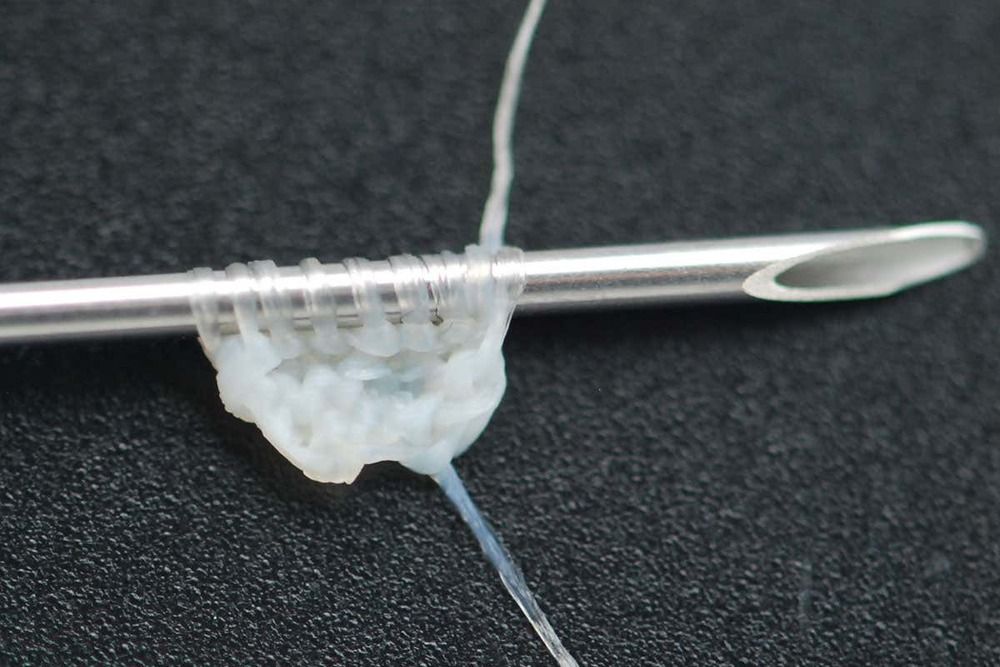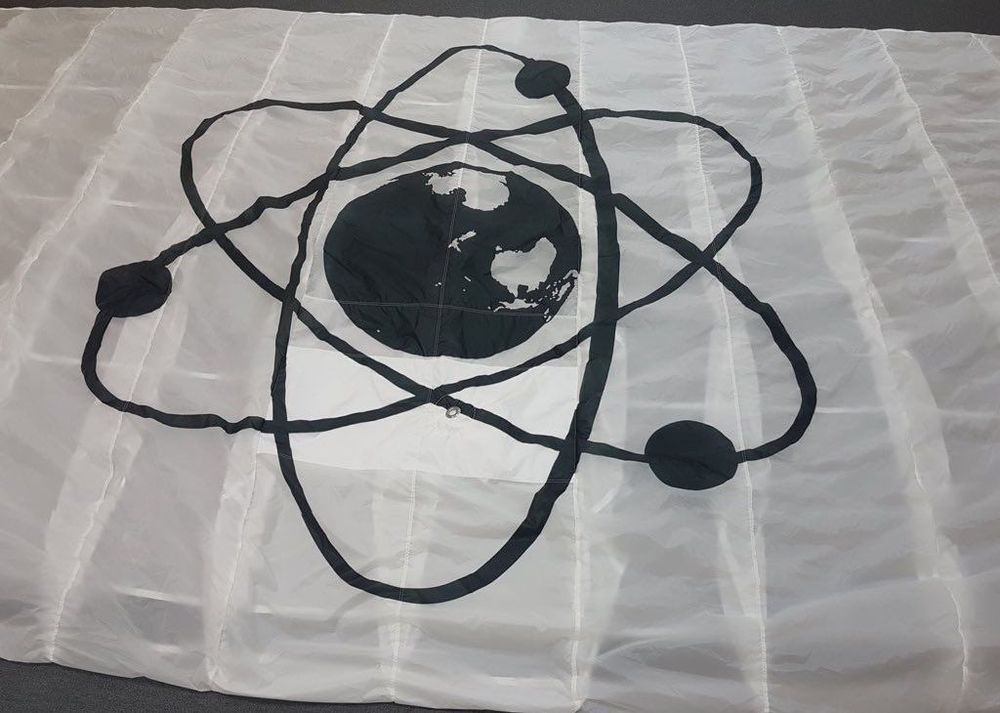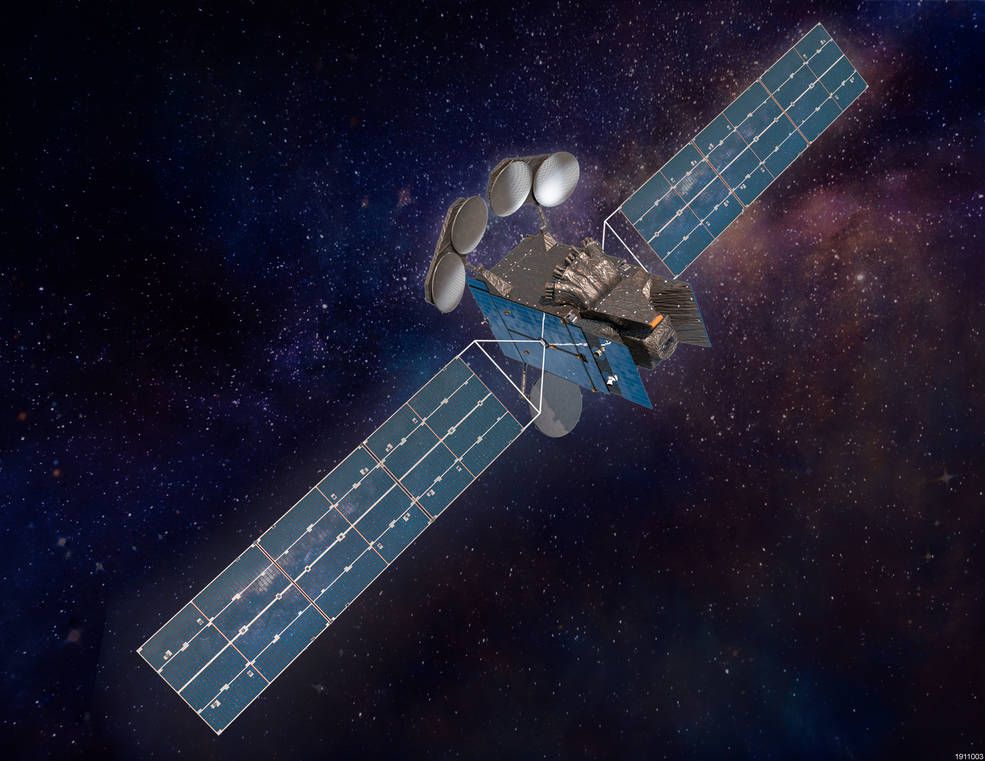Page 7876
Feb 5, 2020
Scientists Release Genetically Engineered Moths for First Time
Posted by Brent Ellman in categories: bioengineering, biotech/medical, food, genetics, sustainability
The diamondback moth is a huge pest. It eats a variety of crops, but is largely resistant to insecticides, resulting in upwards of $5 billion in losses every year.
That could soon change, though, as an international team of researchers has created a strain of genetically engineered diamondback moths that could suppress the pest population in a sustainable way — and they just released them into the wild for the first time.
For the study, published Wednesday in the journal Frontiers in Bioengineering and Biotechnology, the researchers engineered the moths so that when the males of the strain mated with wild females, the female offspring would die during the caterpillar life stage.
Feb 5, 2020
The Stuff of Insect Nightmares: Genetically Engineered Entomopathogenic Fungi
Posted by Brent Ellman in category: genetics
Insect-killing fungi are used to control insect pests worldwide. Scientists can genetically engineer them to be even more effective and suited for our needs.
Feb 5, 2020
The future of biotechnology
Posted by Prem Vijaywargi in categories: biotech/medical, futurism
Feb 5, 2020
Scientist Warns Of Mini Ice Age As Sun Hibernates During Solar Minimum
Posted by Brent Ellman in category: climatology
An expert warned that Earth might experience a mini ice age when the Sun hibernates due to its solar minimum cycle. According to the expert, the Sun’s hibernation and extremely cold weather could last for over three decades.
The solar minimum is a period in the Sun’s solar cycle that occurs every 11 years. During the solar minimum, sunspots on the Sun’s surface diminishes, leading to a weaker output from the massive star. On the other hand, during a solar maximum, the Sun emits more energy as its sunspots increase.
According to Valentina Zharkhova, a professor at Northumbria University’s department of mathematics, physics and electrical engineering, the Sun is about to enter a Grand Solar Minimum this year, which is like an extended version of the solar minimum. Instead of lasting for only a couple of years, the Grand Solar Minimum could extend for 33 years.
Feb 5, 2020
Permafrost Is Thawing So Fast, It’s Gouging Holes in the Arctic
Posted by Brent Ellman in category: futurism
Normally, these terrains of frozen soil thaw gradually. But in some places, it’s thawing so abruptly that landscapes are collapsing in on themselves.
Feb 5, 2020
Yarn grown from human skin cells could be knitted into your body
Posted by Brent Ellman in categories: biotech/medical, materials
A yarn-like material made from human skin cells could be used for surgery and complex tissue reconstruction without triggering an immune response.
Feb 5, 2020
Rocket Lab readies parachute tests for its rocket recovery and reuse program
Posted by Genevieve Klien in category: space travel
Rocket Lab is proceeding as planned with its efforts to recover and reuse spent rocket boosters from its Electron launch vehicle, and has completed its first prototype parachute for use in the recovery process. Rocket lab CEO Peter Beck announced last year that it would be aiming for reusability with the first stage of its rocket, using a system that includes the booster re-entering Earth’s atmosphere, then deploying a parachute to slow its descent so that it can be caught mid-air by a helicopter and returned to land.
Already, Rocket Lab has made good progress on its plan, with two tests under its belt of the guided re-entry par tof the process, including a launch in early December 2019, and one just last week. Now, Beck said on Twitter that the company is ready to move on to stage two, which is developing the parachute system that will deploy once the rocket has completed re-entry, to slow its rate of descent. Rocket Lab’s first parachute prototype is ready, Beck says, and the company will start testing it using low-altitude drops, as well as testing the capture process, beginning next week.
Stage 1 reusability: –Get through the “wall”✅. – – Now let’s slow it down. Rocket Lab’s first prototype chute is complete. The Low altitude drop and capture test program begins next week. pic.twitter.com/SBvqxoFABg
Feb 5, 2020
Maxar says last year’s unnamed GEO order is new Intelsat satellite
Posted by Genevieve Klien in categories: electronics, satellites
WASHINGTON — Maxar Technologies says the geostationary satellite order it disclosed in November without naming the customer is a high-throughput Intelsat spacecraft that will also carry a pollution sensor for NASA.
Intelsat announced Feb. 3 that it had selected Maxar to build Intelsat-40e, a satellite that will provide high-throughput coverage of North America and Central America.
Intelsat-40e will also carry NASA’s Tropospheric Emissions: Monitoring of Pollution (TEMPO) hosted payload under a NASA contract with Maxar.
Feb 5, 2020
The Age of Graphene: Samsung’s Revolutionary Battery Technology
Posted by Oguzhan Kosar in categories: biotech/medical, computing, mobile phones, nuclear energy, sustainability

Pre-historic times and ancient history are defined by the materials that were harnessed during that period.
We have the stone age, the bronze age, and the iron age.
Today is a little more complex, we live in the Space Age, the Nuclear Age, and the Information Age.
And now we are entering the Graphene Age, a material that will be so influential to our future, it should help define the period we live in.
Potential applications for Graphene include uses in medicine, electronics, light processing, sensor technology, environmental technology, and energy, which brings us to Samsung’s incredible battery technology!
Imagine a world where mobile devices and electric vehicles charge 5 times faster than they do today.
Cell phones, laptops, and tablets that fully charge in 12 minutes or electric cars that fully charge at home in only an hour.
Samsung will make this possible because, on November 28th, they announced the development of a battery made of graphene with charging speeds 5 times faster than standard lithium-ion batteries.
Before I talk about that, let’s quickly go over what Graphene is.
When you first hear about Graphene’s incredible properties, it sounds like a supernatural material out of a comic book.
But Graphene is real! And it is made out of Graphite, which is the crystallized form of carbon and is commonly found in pencils.
Graphene is a single atom thick structure of carbon atoms arranged in a hexagonal lattice and is a million time thinner than a human hair.
Graphene is the strongest lightest material on Earth.
It is 200 times stronger than steel and as much as 6 times lighter.
It can stretch up to a quarter of its length but at the same time, it is the hardest material known, harder than a diamond.
Graphene can also conduct electricity faster than any known substance, 140 times faster than silicone.
And it conducts heat 10 times better than copper.
It was first theorized by Phillip Wallace in 1947 and attempts to grow graphene started in the 1970s but never produced results that could measure graphene experimentally.
Graphene is also the most impermeable material known, even Helium atoms can’t pass through graphene.
In 2004, University of Manchester scientists Andre Geim and Konstantin Novoselov successfully isolated one atom thick flakes of graphene for the first time by repeatedly separating fragments from chunks of graphite using tape, and they were awarded the Nobel Prize in Physics in 2010 for this discovery.
Over the past 10 years, the price of Graphene has dropped at a tremendous rate.
In 2008, Graphene was one of the most expensive materials on Earth, but production methods have been scaled up since then and companies are selling Graphene in large quantities.
Sources:
http://www.graphene.manchester.ac.uk/explore/the-story-of-gr…rly-years/
https://en.wikipedia.org/wiki/History_of_graphene
https://en.wikipedia.org/wiki/Potential_applications_of_graphene
http://luratia.com/graphene/category/graphene-facts#sthash.3…mEmGp.dpbs
https://blogs.windows.com/devices/2013/02/07/hero-material-1…-graphene/
https://news.samsung.com/global/samsung-develops-battery-mat…ging-speed

















